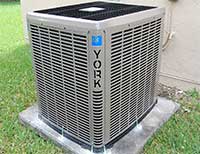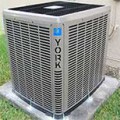Summer is still here for a couple of weeks, but for some, the fall chill is already in the air. You can have a hot day, go to sleep with the windows open and wake up shivering under your summer covers. One day you crank the AC, and the next, you’re tempted to turn on the furnace. Using either excessively will make your utility bills soar. Whether you’re using the AC or the heater, here are few tips to help you keep the bills as low as possible.
Use a Programmable Thermostat
If you are at work all day, there’s no reason to make your AC or furnace work so hard while you’re gone. Programmable thermostats automatically modify the temperature throughout the day. Make sure your thermostat isn’t installed in direct sunlight or against an outside wall. You want it somewhere central in your household so it accurately reads the temperature of your house. For that reason, don’t install an appliance near a thermostat.
Set your thermostat to cool or heat to your desired temperature an hour or so before you get home. Just avoid extremes. Don’t expect your furnace to go from 50 to 72 degrees in an hour, and likewise for your AC.
Inspect Insulation
An air conditioning unit or furnace has to change the existing air into something more comfortable for you. If you have open windows or gaps in your insulation, your units will have to work much harder to maintain an ideal temperature.
Older homes are more prone to leaks and drafts. In the winter, if you can feel cold air coming through the windows, you may need to add weather stripping or replace your old windows with new, energy-efficient ones. Have a professional inspect your attic and pipes for proper insulation. With AC, the cold air leaves your home through leaks, so it might be harder to notice. However, you will find certain rooms in the house won’t cool as well as others. Keep those rooms closed.
Use Your Blinds
If the sun is shining through your windows while the AC is running, you are giving it a more difficult task. Shut the blinds so they can reflect the sunlight away from your home. In the winter, let the sun shine in wherever it can to help warm your house. You’d be surprised how hot a front door can get when the sun is beating down on it, even in the dead of winter.
Run Fans
Fans use energy, but not nearly as much as an AC or furnace. Fans can help you generate your hot or cold air and assist in the heating or cooling. To help cool your air, run your ceiling fan counter-clockwise, so it can force the air down and keep it cool. When it’s cold, run the fan clockwise at a low speed. This will draw the air up and force the warm air down. If you don’t have ceiling fans, you can run the one on your furnace for better air circulation.
Use Appliances Wisely
When it’s cold, bake inside. When it’s hot, use the outdoor grill more often. Try not to make your appliances tax your cooling or heating efforts. In the summer, run your dishwasher at night. Washers using hot water will make the room temperature rise. Dryers vent outside, but they can still generate quite a bit of heat in the laundry room.
Change Filters Regularly
Consult your owner’s manual for your specific model of air conditioner or furnace, but plan on changing your filters at least twice per year, winter and summer. Filters keep debris out of your unit and keep healthier air coming through the vents. It’s easy to forget about filters, but they can get clogged and cause your unit to run inefficiently.
Over time, accumulated debris can cause permanent damage. Check AC filters monthly, and change furnace filters twice a year. Musty smells indicate a clog or another problem with your vent. Listen for odd noises, as well. The normal running sound is fine, but loud banging or squealing could indicate a problem.
Don’t Hide Your AC Unit
Air conditioning units can be bulky and ugly. Some look like spaceships. You might be tempted to plant bushes around them to minimize the eyesore. The problem with trying to hide your AC unit is that anything nearby will minimize air flow, making your AC work harder. Plus, with more bushes and trees around it, you are more apt to clog it with leaves, twigs and plant pollen.
Trees and shrubs that shade your home might actually help keep your home cooler. Just be sure to maintain at least five feet of clearance between your unit and any landscaping. Tolerate the appearance of your AC unit during the summer months. When it gets colder, you can always put an appropriate cover on it.
Have your furnace and air conditioning units inspected seasonally so professionals can identify and address any potential problems. Both need tune-ups from time to time. Vents can clog, parts can wear out and efficiency can be compromised as a result. It’s no different than your car or any other machine. Don’t be tempted to do repair work yourself. You can change a filter, but leave the maintenance to the professionals. And don’t wait for a problem. Better to call them before you are freezing in the cold or sweating from the heat.









